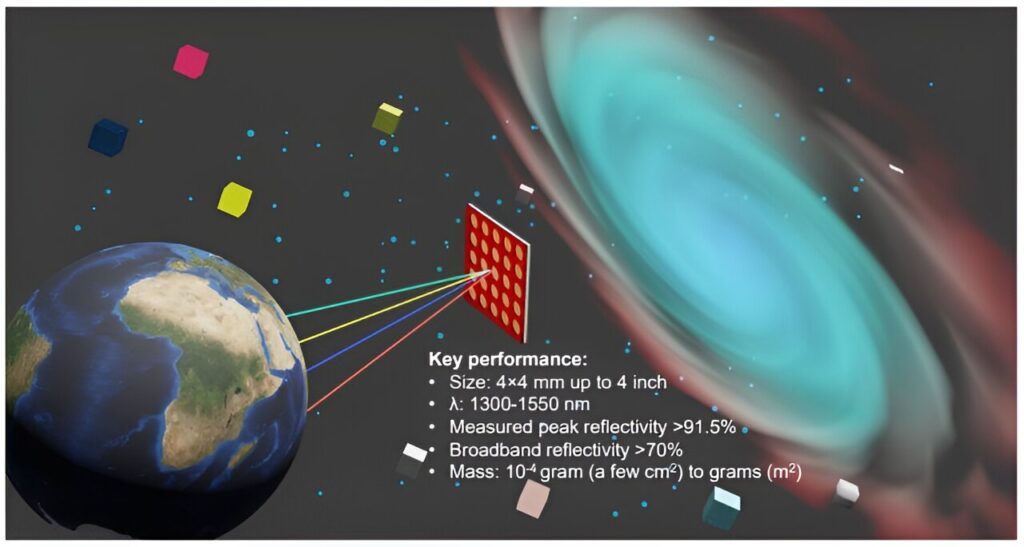Scientists believe that photonic crystals are ideal for making solar sails. They are special optical nanostructures made of atoms of various elements. They can be used to build a vehicle that will reach Proxima Centauri within the lifetime of one generation.

Space sailboat for interstellar travel
Scientists propose to use photonic crystals to make a new generation of solar sails. They will make it possible to implement the project of an interstellar probe capable of reaching Alpha Centauri in just a few decades. An article about this appeared on the arXiv preprint server.
Currently, spacecraft are accelerated by a jet impulse from chemical engines. However, to reach the nearest star, Proxima Centauri, within a generation, as proposed by the Starshot Breakthrough project, for example, it is necessary to reach speeds of many thousands of kilometres per second.
Traditional fuels would require an enormous amount of energy. That is why scientists propose to use sails instead of jet acceleration. They use a pulse of photons coming from somewhere outside, such as the Sun.
However, in order for a solar sail to work, it must reflect almost all the photons that hit it, rather than absorb or transmit them. This means finding the material that can do this best.
Amazing photonic crystals
When the idea of a solar sail first appeared, it was proposed to make these structures from aluminium foil. Nowadays, polymer films with reflective coatings, such as Mylar, are used for this purpose.
However, this is not quite what is needed. So in a new article, scientists have proposed making sails from nanofilms of photonic crystals. The latter are special nanometric-scale structures that have interesting optical properties.
The nanometric scale occupies an intermediate position between the microscopic scale, where it is convenient to work with an optical microscope and, for example, study organic cells, and the molecular scale. It is on this scale that the main property of photonic crystals is manifested — their refractive index changes with a certain periodicity.
This allows photonic crystals to reflect light particularly efficiently. These structures are also found in nature, for example, they cover the eyes of cats and some birds, allowing them to glow in the dark.
However, scientists have turned their attention to synthetic photonic crystals based on silicon nitride. They perfectly reflect electromagnetic waves with a length of 1300 to 1500 nm, which allows them to be used for sails.
Based on materials from phys.org

